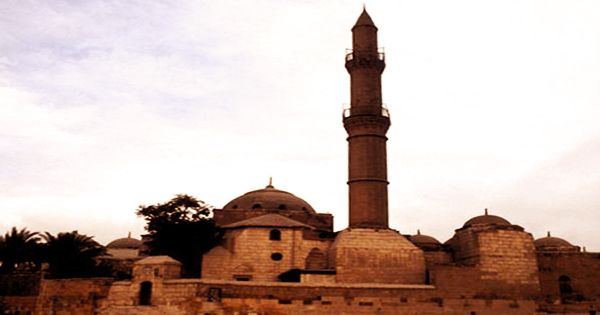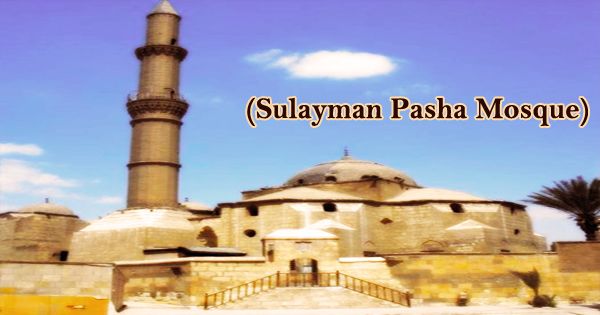The first Ottoman-style mosque in Egypt is considered to be the Sulayman Pasha al-Khadem Mosque (Arabic: مسجد سليمان باشا الخادم), also known as Sariat al-Jabal Mosque. It is a historical mosque founded by Suleiman Pasha Al-Khadem in 1528, and it is located at the top of Mount Mokattam within the Cairo Citadel, and originally erected for the use of the jannisaries in the northern enclosure. In plan and profile, the mosque is basically Ottoman. The prayer hall adopts the Ottoman version of the T-form and is enclosed in the Ottoman way by a shallow central dome, flanked by 3 semidomes. A courtyard surrounded by domed arcades faces this. Similarly, the minaret is Ottoman in shape with a cylindrical, faceted shaft surmounted by a conical finish and located to the right of the facade of the entrance. It is raised above the small mosque to proportionately high height. In the 15th century, Suleiman Pasha became governor of Egypt. The influence of Suleiman Pasha was expressed by the new house. The mosque, composed of Egyptian craftsmen and an architect, was built by Suleiman Pasha. Sulayman Pasha undertook a program to completely renovate and restore the old mosque when the original mosque showed signs of decay, practically rebuilding it in the Ottoman style. The mosques of Istanbul, Turkey, such as the Suleymaniye Mosque (built AH 965 / AD 1558), he used as his inspiration. Domes, semi-domes, pencil-shaped minarets, and the use of ceramic-tile upholstery on the inner walls define the Ottoman style.

(Sulayman Pasha Mosque)
The mosque’s key façade is on the southwestern side. It is set with a projection portal followed by steps of stone. The steps lead up to a rounded arch that is topped by the outer entrance. With two ribs, each jutting out from the body and decorated with multicolored muqarnas, the minaret is cylindrical. A cone covered with green panels is capped with it. In most of the mosques set up during the Ottoman period, this sort of Ottoman minaret was used. With the dome resting on spherical pendentives, the interior reflects the outer Ottoman shape and is ornamented with marble revetments, inscriptions, carving, and elaborate stucco. Two iwans belong to the prayer hall. The first iwan, distinguished by a pointed arch and polychrome marble decoration, is the qibla iwan (southeastern) containing the mihrab. In addition to the name of the sponsor and the name of Sultan Suleyman al-Qanuni (the Magnificent), the upper portions of the walls of this iwan have four circular cartouches that include inscriptions from Qur’anic verses. The second (northwestern) iwan is distinguished by a marble floor lower than the qibla iwan floor, and a decorated marble minbar is embellished with gilded geometric and vegetal leaf patterns on its southeastern side. Other attributes of the complex include a Fatimid era shrine, restored with its entry integrated into the court’s arcades. It was originally built to house his tomb by Abu Mansur Qasta, governor of Alexandria, about 1140, and dedicated to Sidi Sariya, a companion of the Prophet, hence the mosque’s common name. The edifice is in the form of a rectangle outside the mosque. It portrays the remainder of the building with 9 smaller domes. In the northeastern wall, there is a door that leads to the mosque’s internal annexes, such as the ablutions and areas for water supply. There are four arched niches on the northwestern wall facing the Qibla wall, one of which contains a window, while the other has a door leading to the courtyard of the mosque. The mosque’s walls are paneled with a polychrome marble lining, over which an epigraphic inscription band is containing Qur’anic verses in a leafy Kufic script. On the northern side, another courtyard is situated. Based on the work of Egyptian craftsmen, the walls were made of marble. Marble ornamentation consisting of geometric units decorates the floor of the mosque. Despite the use of the Ottoman style in the architecture, the decoration of the mosque indicates a continuation of the Mamluk practices of embellishment.
















